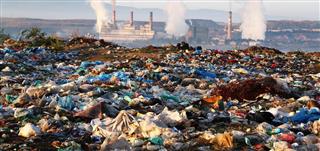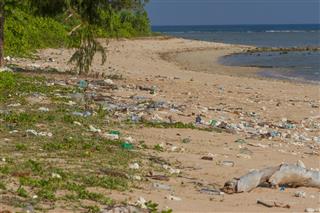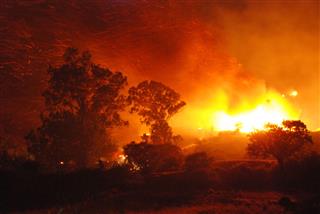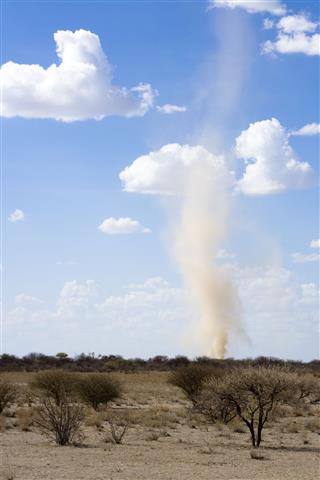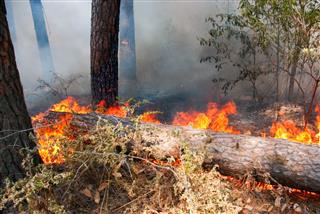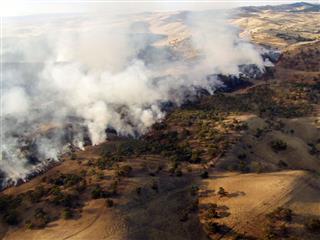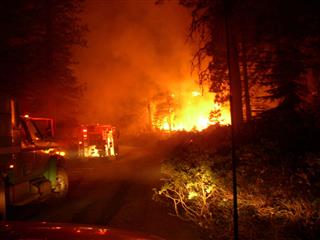
What is land pollution? How does it affect the environment? This HelpSaveNature article gives you some facts and statistics.
The process of contamination of the land surface of our planet is referred to as land pollution. It results from human activities that cause the contamination of soil and degradation of land. Dumping of human and industrial waste in soil, harmful agricultural practices, and harmful chemicals are the primary causes of land pollution. We often ignore the fact that land constitutes soil, which is one of the most important natural resources. While discussing the causes and effects of pollution, we speak of noise, water, and air and rarely even think of the adverse effects that the pollution of land can have on us and the environment.
Facts and Statistics
- Land pollution is the result of misuse of soil. Poor agricultural practices lead to degradation of soil. Wrong methods of soil management and harmful irrigation practices lead to soil pollution. Monoculture, overgrazing, and improper methods of irrigation are some of the main reasons why the quality of soil degrades. 40% of the world’s agricultural land is said to have degraded.
- A study done in Calabar South, Nigeria, showed that about 60% of the agricultural land in this region is degraded, and has mainly resulted in decreased productivity of the land. Apart from wrong agricultural practices, urbanization and high population density (that causes a rising competition for land use) have been attributed as the causes of land degradation in the region. Soil erosion and nutrient loss have also led to decreased productivity in Calabar South and it is predicted that if erosion continues at the current rate, there will be an 87% drop in yield by 2020.
- Dumping of garbage underground is one of the leading causes of land pollution. Also known as a landfill, it is a very old way of waste disposal. If not managed well, landfills can cause environmental pollution, as well as contamination of groundwater and soil. More than 80% of the items in landfills can be recycled. But sadly, we recycle very less.
- According to the Australian Bureau of Statistics, the volume of waste deposited in landfills increased by 12% between 2001 and 2007, from 19 million to 21.3 million. In 2007-08, an alarming 16.8 million TV and/or computer units were disposed in landfills.
- The waste in landfills may ignite (occurs mostly when the landfill is uncovered and when decomposition generates heat enough for the garbage to start burning), causing landfill fires. According to the 2001 report of the US Fire Administration, there are around 8300 fires a year in the USA.
- Urbanization (shift of population from rural to urban areas) and industrialization (shift from agrarian to industrial) are other important causes of land pollution. It has been speculated that by 2050, 64% of the population from developing countries and 86% of the population from developed countries will be urbanized.
- Urbanization leads to concentration of people in cities, which further leads to concentration of waste products. There may be insufficient facilities for waste collection and management, thus causing pollution of land. Urban development involves construction of buildings and roads. This leads to soil erosion and reduces the land available for agriculture or afforestation. Industrialization leads to environmental pollution as industrial wastes contaminate air, water, and soil.
- According to estimates from the Chinese Academy of Sciences, soil polluted by heavy metals amounts to 20 million hectares. With the rise in urbanization and industrialization, the production of municipal solid waste has increased by 9% annually.
- A study across the country in 1995 indicated that about 3.62 million hectares of land was irrigated by polluted water and sewage.
- According to a recent survey by the Institute of Soil Science, Chinese Academy of Sciences (ISSAS), half the area of paddy fields in the Taihu Lake watersheds of YRD region was polluted.
- The extraction of minerals and the increasing quarrying and mining activities lead to land pollution. These activities lead to the loosening of soil. Deforestation is one of the major causes of this loosening, that further causes soil erosion. The soil that is left exposed on harvesting crops from agricultural land tends to get eroded by wind and water. Intensive agricultural practices cause the soil cover to lose its nutritional elements, making it of no use for agriculture.
- According to the data of the World Resources Institute, 80% of the world’s forest cover is already lost. 90% of the tropical forest cover in West Africa has been destroyed over the last century.
- Excessive use of pesticides and chemical fertilizers causes contamination of soil. Chemicals can prove harmful to animal and plant life. An excessive use of chemicals leads to a decrease in soil fertility. Certain herbicides and insecticides lead to toxicity. Fungicides contain copper and mercury, which are extremely harmful to the soil as well as to the plant and animal life that thrives in it.
- Some pesticides like aldrin and DDT can remain in the environment for years. They are called persistent organic pollutants. They can travel through the atmosphere and even increase in concentration (as much as 70,000 times) over time.
- Agricultural and industrial waste, solids from sewage treatment plants, ashes, and garbage are other sources of land pollution. The accumulation of inorganic wastes in soil poses a threat to the plant and animal life in that area. Garbage is carelessly dumped on land. Non-biodegradable wastes such as plastic and rubber prove lethal to the life in soil. Plastic and glass bottles, cans, rubber tires, and electronic items dumped in the soil are a common reason behind land pollution. Solid wastes are harmful to terrestrial plants and animals.
- In a study by China’s environment ministry, it was found that 16% of the soil contains higher-than-permitted pollution levels. In this study, soil samples across 6.3 million sq. km. were taken. The report also stated that 82.8% of the soil samples contained traces of cadmium, mercury, arsenic, copper, lead, chromium, zinc, and nickel. According to the environmental activist Zhang (as he told Radio Free Asia’s Mandarin Service), at least two-thirds of agricultural land in China is polluted.
- Every year, an American produces more than 3285 pounds of hazardous waste. Americans generate 30 billion foam cups, 220 million tires, and 1.8 billion diapers every year. According to EPA reports, in 2012, Americans generated 251 million tons of trash out of which 87 million tons was recycled.
- According to the Australian Bureau of Statistics, the volume of waste generated per person in Australia grew at an average annual rate of 5.4% between 1996-97 and 2006-07. In this period, the waste produced per person grew from 1,200 kg to 2,100 kg.
- How does land pollution affect the environment? One of its major consequences is the imbalance in nature, resulting from the harm caused to the wildlife and vegetation on land. It can lead to respiratory disorders and skin problems in humans. The consumption of fruits and vegetables that are grown in contaminated soil can lead to several health hazards.
- When contaminated soil is washed away to the water reservoirs, it leads to water pollution, which is lethal to the aquatic flora and fauna.
- Soil contaminants are driven by the wind, causing air pollution, which is detrimental to the health of humans and animals.
- Land pollution causes us to lose 24 billion tons of top soil every year.
It is high time we realize the importance of soil and devise and implement ways to curb land pollution. The maximum use of biodegradable materials and adopting methods such as recycling and reuse of resources are some ways of preventing land pollution. Waste should be disposed in the right way and not allowed to stay in the soil, contaminating it. Excessive use of the same land for agriculture leads to nutrient loss. Deforestation leads to soil erosion. These or any other practices that can lead to the loss of quality or utility of soil, should be stopped. It is necessary to educate the masses about the causes and effects of land pollution, so that this environmental issue is taken seriously and acted upon. We cannot afford to take Mother nature for granted.

